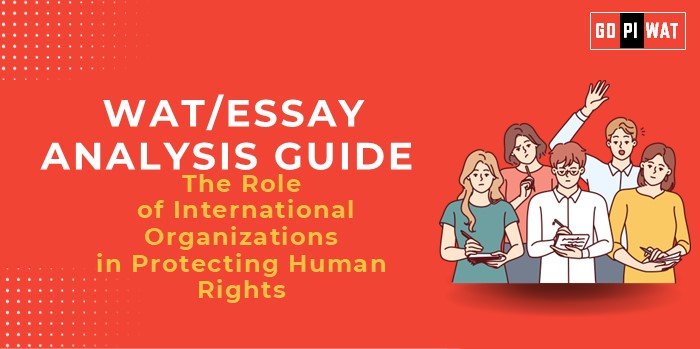🌍 The Role of International Organizations in Protecting Human Rights
🔍 Understanding the Topic’s Importance
International organizations are central to safeguarding human rights in an interconnected world. From refugee crises to digital privacy concerns, their role is pivotal in addressing global challenges. This analysis explores their achievements, challenges, and future directions.
📝 Effective Planning and Writing
- Time Allocation: 5 minutes for planning, 20 minutes for writing, 5 minutes for review.
- Preparation Tips: Incorporate case studies, key treaties, or statistics to strengthen arguments.
✍️ Introduction Techniques
-
Contrast Approach:
“While the UDHR promises universal rights, their implementation often depends on international bodies intervening where states falter.” -
Solution-Based Approach:
“The rise in global conflicts demands a rethinking of the mandates of international organizations to ensure better enforcement.”
🏆 Structuring the Essay Body
Achievements
- 🛡️ Treaty Implementation: Successes like the Paris Agreement and Convention on the Rights of the Child.
- 📢 Advocacy Impact: Mobilizations such as the global anti-apartheid movement.
- 🌍 Global Interventions: Effective crisis responses in regions like Darfur and Kosovo.
Challenges
- ⚖️ Enforcement Limitations: Lack of binding authority in many cases.
- 💰 Resource Gaps: Funding shortages hinder operations in conflict zones.
- 🎯 Geopolitical Biases: Selectivity in interventions undermines credibility.
Future Outlook
- 🤝 Enhance regional collaboration to complement global frameworks.
- 📈 Develop binding enforcement mechanisms for stronger accountability.
- 💡 Leverage AI for rights monitoring and crisis prediction.
✨ Concluding Effectively
-
Balanced Perspective:
“The evolving global landscape underscores the indispensable role of international organizations, despite their flaws.” -
Global Comparison Approach:
“Comparing the successes in Scandinavian nations with ongoing struggles in the Middle East reveals actionable insights.”
📚 Analyzing Successes and Shortcomings
- ✅ Key Achievements: Treaty ratifications and effective crisis responses.
- ⚠️ Ongoing Challenges: Geopolitical biases and funding gaps.
- 🌍 Global Context: Best practices from successful interventions offer replicable models.
🔑 Recommendations for Sustainable Progress
- 🌐 Strengthen collaboration with regional bodies.
- 📜 Develop binding enforcement mechanisms to ensure compliance.
- 📊 Increase transparency and accountability in organizational operations.
📝 Sample Short Essays
-
Balanced Perspective:
“The protection of human rights hinges on international oversight. Despite challenges like selective enforcement, treaties like the Paris Agreement show collective global potential.” -
Solution-Oriented:
“Reforming international organizations to address funding gaps and bias can enhance their credibility. Regional alliances could complement these efforts effectively.” -
Global Comparison:
“Northern Europe’s high compliance with human rights treaties contrasts sharply with South Asia’s struggles, highlighting the need for localized strategies under global frameworks.”


